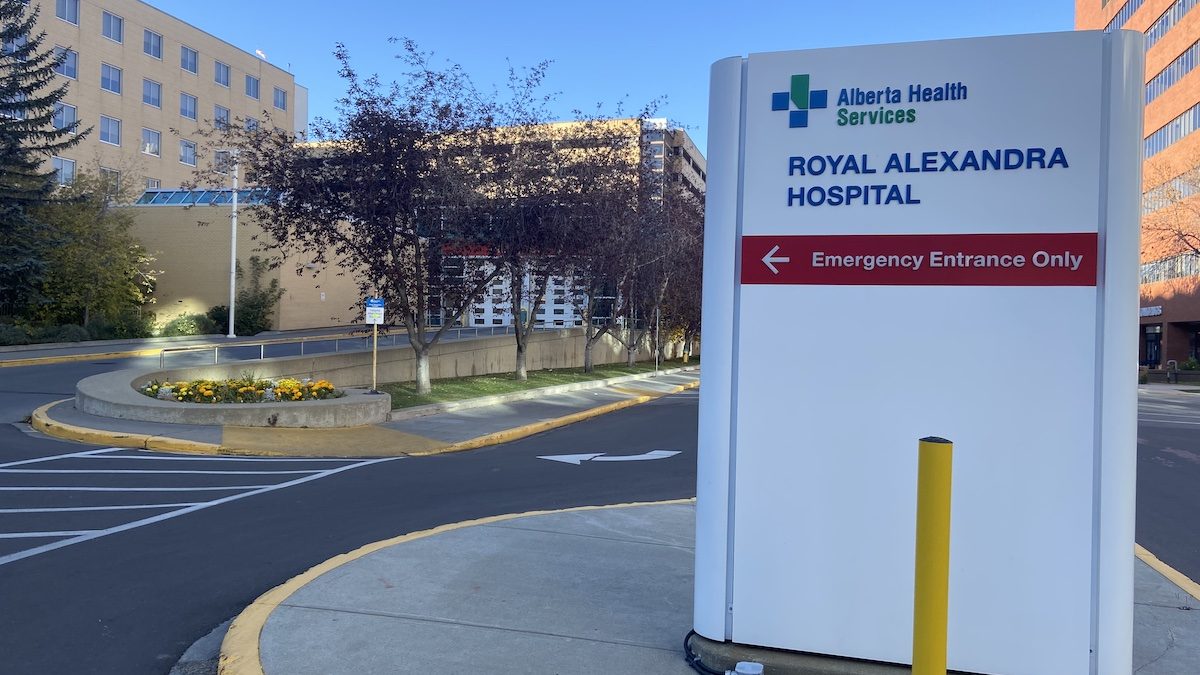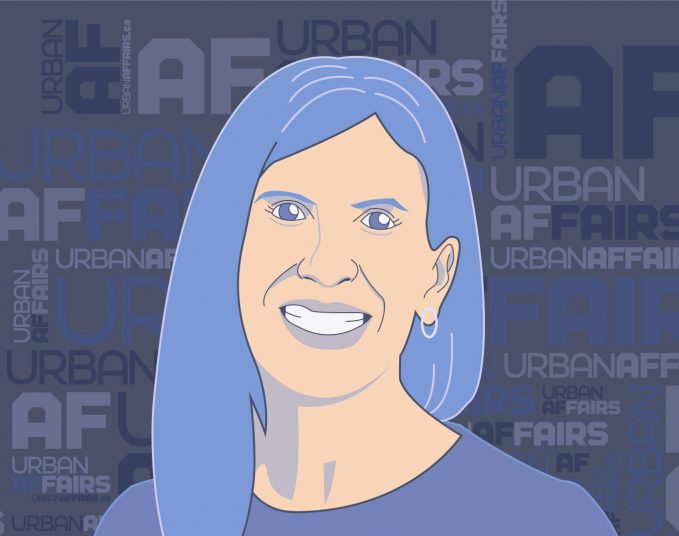A little over a year ago, in August of 2022, healthcare workers at the Royal Alexandra Hospital noticed a strange trend among Edmonton’s inner-city, unhoused population. People were showing up severely ill and testing positive for Shigella — a relatively benign illness most readily treated with bedrest, fluids and, in some cases, a course of antibiotics.
But the people being seen at the Royal Alexandra Hospital weren’t just in need of bedrest. Many of them were presenting with severe dehydration, fever, bloody diarrhea and, sometimes, sepsis and kidney damage.
An outbreak was declared by Alberta Health Services (AHS) and a task force was struck between AHS, the City and a handful of other organizations. Some 500 personal care kits were distributed. Temporary mobile washrooms were put into place. Testing and outreach were conducted.
But a year later, the outbreak persists among some of the city’s most vulnerable, causing harm to an already downtrodden community and tying up vital hospital resources during a time when healthcare is stretched thin.
How did we get here? Where hundreds of people are still being hospitalized a year later? How do we get out? More importantly, how is this acceptable in one of the wealthiest provinces of one of the richest nations on earth?
Close, But No Cigar
The initial outbreak was declared to be at its end in February of 2023, but less than a month later it was reinstated. To date, AHS has identified 281 people who’ve contracted Shigella. More alarming than that number is that 194 of those people required hospitalization.
No one has yet died from the illness, but it is remarkable that nearly 65 per cent of those infected required hospital care, according to Lynora Saxinger.
“That number is shockingly high,” says Saxinger, an infectious disease expert with the University of Alberta.
Shigella most typically occurs when a person ingests food, water or other material tainted with Shigella infected feces. It’s strikingly contagious, sometimes requiring exposure to as little as 10 organisms. That’s in contrast to something like salmonella, which can require exposure of up to 1,000 or more organisms for illness to take hold, according to Health Canada.
But the illness is relatively rare in developed nations like Canada, where it’s most traditionally found in those who have been travelling abroad to areas with lower sanitation standards and occasionally among men who have sex with men. In recent years, it’s been showing up more and more in unhoused populations.
With a rate of hospitalization that high, Saxinger says the outbreak is likely much more widespread than we realize.
“It probably means we’re missing a whole bunch of other cases that are less severe,” she says.
Vulnerable Populations
While outbreaks of this size and severity are rare in Canada, they’re not unheard of and most often it is marginalized, immunocompromised and vulnerable populations — much like those living in encampments in our inner-city — who are most impacted.
In 2021, Vancouver’s downtown east side community — home to the infamous East Hastings strip — experienced its own Shigella outbreak. While exact figures as to the caseload experienced in Vancouver are not readily available, various reporting from the time pegs the number between 10 and 24 cases.
That number pales in comparison to the outbreak among Edmonton’s unhoused and under-housed community, but the root causes are the same.
“The Shigella outbreak … is like this encapsulation of all the problems that occur when you have socioeconomic disruption,” says Ram Anantha, a surgeon at The Royal Alexandra Hospital.
Anantha said those living in encampments, shelters and other precarious housing are not only at a higher risk of transmission, but also of developing severe symptoms.
“It’s kind of the end result of people who are malnourished because they’re not eating well because they’re unhoused,” Anantha says. “Because of that your immune system is not as highly functioning and because of (being unhoused) you also have a lack of access to healthcare. On top of that, you may have substance abuse disorders, so you have a high potential for transmission.”
Looking for Solutions
“It’s basically refugee-camp medicine,” Saxinger says of the approach to dealing with Edmonton’s outbreak. Barriers to sanitation, housing and overcrowding among encampments can make tamping down infection seem like a game of whack-a-mole.
It’s those conditions that serve as the lynchpin for why outbreaks like Edmonton’s have proven so resilient and severe, according to emergency physician Shazma Mithani, who’s been on the frontlines of the Shigella outbreak.
“Things like the Shigella outbreak … are symptoms of a larger, systemic problem,” Mithani says. “It’s not just as simple as isolating people and giving them antibiotics. It’s about why these outbreaks are happening to begin with, and thinking about access to housing and healthcare. (Those) are big contributors to why outbreaks like this are happening.”
And while AHS and the community task force say they are continuing to investigate, provide support, conduct testing and offer care, it is that larger, social equity conversation that needs to be had if we’re going to end an outbreak.
“The problem is this isn’t just a public-health problem. It’s a political problem because it requires political leadership to say ‘homelessness is a public-health problem and we need to deal with it,’” Anantha says. “Ultimately, it’s an example of ‘holy shit, we need a good, strong social safety net.'”
Growing Risk Factors
Solving a public health problem this multifaceted isn’t an easy ask, but the consequences of allowing this type of infectious outbreak to fester are troubling.
In recent years, public health organizations including the Centres for Disease Control and Prevention (CDC) in the United States, the World Health Organization’s European branch, and Public Health Ontario have issued warnings about drug-resistant strains of Shigella appearing amid outbreaks.
Known as XDR (extensively drug resistant) the strain (typically Shigella Sonnei) has limited antimicrobial treatment options, meaning an outbreak would be harder to contain with traditional methods.
According to the CDC, in 2022 some five per cent of cases reported in the United States were found to be resistant compared to zero per cent in 2015. In Ontario, that number grew from one per cent to 6.6 per cent.
That’s a worrying trend, but Saxinger says monitoring for resistance is already part of procedure in Edmonton’s laboratories.
“It’s not been a concern, so far,” she says. “What’s going around in Edmonton is Shigella Flexneri, which is less commonly reported as resistant … but it is something that does need to be watched because it would change how you do management.”
Savvy AF. Blunt AF. Edmonton AF.




